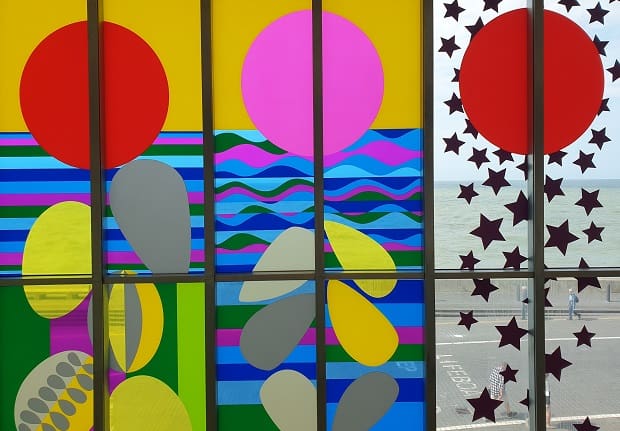
By Dan Thompson
There are a set of people who, whenever Turner Contemporary puts on a new show, complain that film, or sound, or sculpture aren’t proper art. Proper art, of course, means paintings.
I’d like to imagine they will be happy with Maresias, Beatriz Milhazes new exhibition which brings together 20 paintings and five collages. But they probably won’t be, because the paintings are shamelessly abstract.
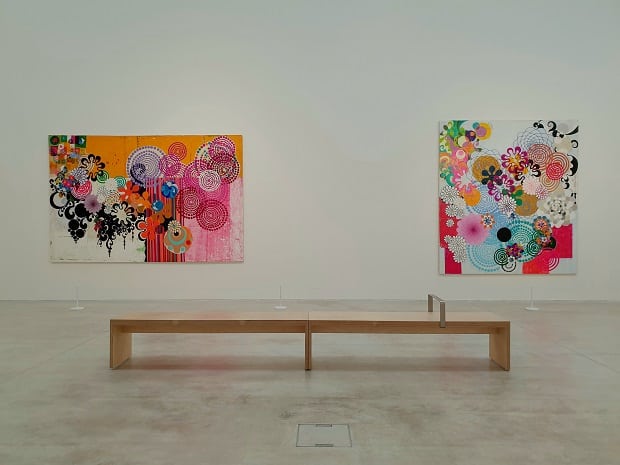
Maresias has a really sparse hang, and the galleries are stripped right back – striking after recent exhibitions which have filled the space with huge scrappy installations, VR pods, big spaces covered in wallpaper, rooms full of hundreds of pages of drawings and notes, and lots of sound. This is a still and silent exhibition, the Turner Contemporary that modernist temple architect David Chipperfield always wanted it to be. I don’t think there has been an exhibition with this little work on display since Turner Contemporary’s opening show in 2011.
The paintings have plenty of space, and – even though they’re on the whole quite large – they don’t feel it when Turner’s big open spaces are revealed. The paintings are full of pattern, huge circles and bold stripes, baroque swirls, vibrant candy colours. While Milhazes mentions liking Bridget Riley, these paintings are nothing like hers – Riley’s surfaces are smooth and her lines precise, but Milhazes are flawed, flaky, and cracked, like fifty-year-old murals that have been out in the sun. You can see the brush marks, see the intent.
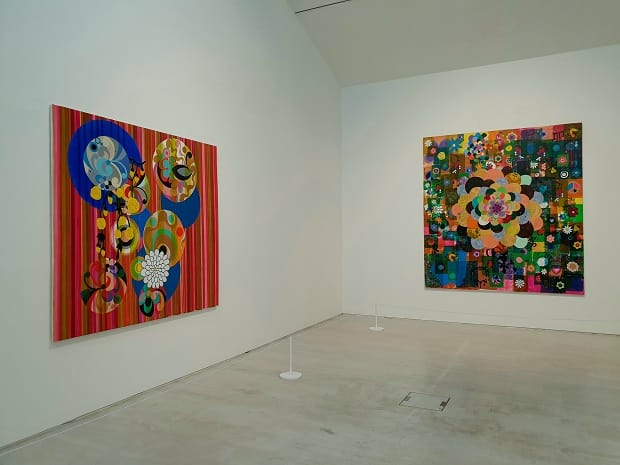
If anything, though, the way Maresias is put together feels too sparse for such layered, textured work. These paintings should be hung against boldly-painted walls (remember the shock when community groups took over Turner for The Open, and one painted walls lime green and neon pink?). The galleries should reverberate with samba music and the sounds of carnival. There should be pot plants and battered sofas, a place to get comfortable so you can take the time to get to know the work, not a big empty space and a couple of hard benches.
And there’s just not enough work to get to grips with an unfamiliar artist. Turner Contemporary quite often uses sketchbooks, ephemera, or smaller works to give context in their single-artist shows, but there’s none of that here. It might have been useful, because Milhazes is an artist most people won’t be familiar with and that scene-setting would help.
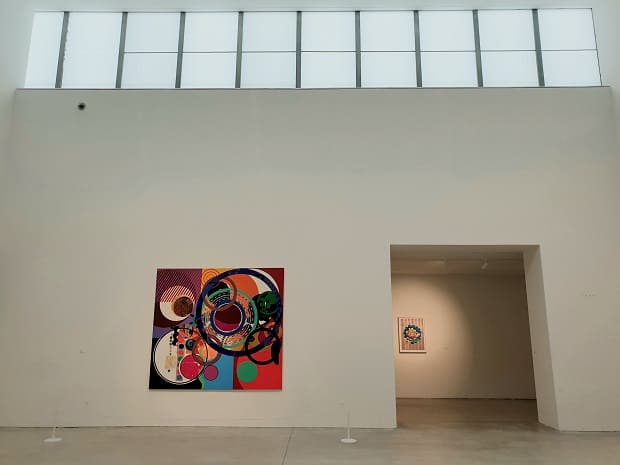
Maresias, we were told, would ‘speak to Turner Contemporary’s unique coastal location’, but it doesn’t. Maresias is Portugese for sea air, but that’s as far as the connection goes. These are very much works from somewhere else, which is not a bad thing, but to claim a local connection is stretching things. They’re not paintings about the cold North Sea that’s outside the gallery. They’re from closer to the equator, where colours are deeper and the difference between light and shade clearer. As if to emphasise this, Milhazes has kept the paintings’ original titles, in Portugese.
There is one point where Milhazes really connects with Turner Contemporary and Margate though, but that is in the one work that’s nothing like the others.
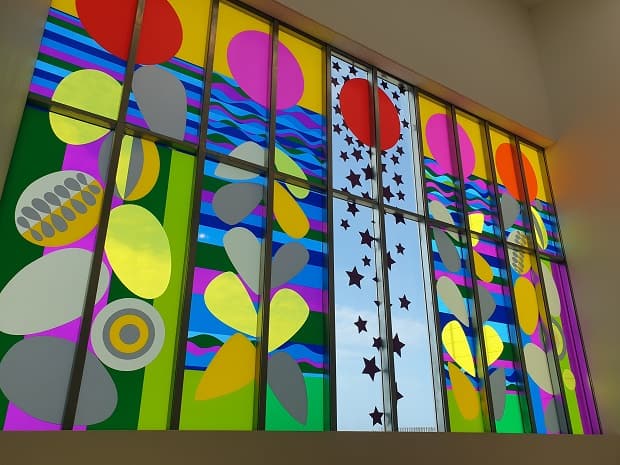
The double-height windows in the Sunley Gallery have been transformed by Milhazes into a stained glass window, reminiscent of Matisses’s work at La Chapelle du Rosaire. While Milhazes paintings are loose and painty, this work (titled O Esplendor) is – by nature of the digitally-cut materials – all hard edges, monochromatic shapes, and precise lines. And it uses a set of shapes that aren’t found in her paintings, too, including some very Mattisse-like stars. It’s absolutely stunning by day and will be illuminated in the evenings after the gallery’s closed too. It’s one of those Turner Contemporary moments where the work will break out of the gallery and become part of the townscape – it’ll be all over Instagram this summer.
In summary, I love the paintings and collages, but the big empty rooms don’t do it for me.
An audience that doesn’t like film, sound, and sculpture – and who might not like the abstraction of Milhazes paintings – will find it hard to dislike the window.
The exhibition runs from 27 May – 10 September. Opening hours: Monday: Closed, Tuesday – Sunday, plus Bank Holidays: 10am – 5pm

